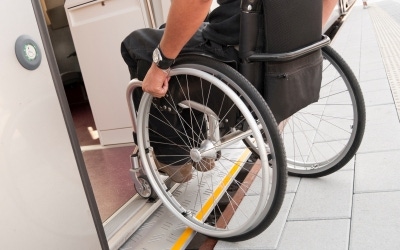Americans With Disabilities Act: New Accessbility Rules for Self-Storage Construction and Renovation
Last year the Department of Justice announced new accessibility rules for the Americans With Disabilities Act. Self-storage facilities that fail to comply with the law may find themselves subject to liability. Operators need to review these issues before the March 15, 2012, deadline to prepare themselves for the risk of claims.
July 23, 2011

By Scott Zucker
Title III of the Americans With Disabilities Act of 1990 (ADA) prohibits private entities from discriminating against individuals with disabilities and maintaining places of business that are not physically accessible. The Act requires places of public accommodation to remove architectural barriers that limit access or use of the public place. The term public accommodation in the ADA generally encompasses all private businesses that offer goods and services to the public, including self-storage facilities.
Existing buildings, alterations and new construction are all within the scope of ADA's public-accommodation provisions. The ADA requires small businesses remove architectural barriers in existing facilities when its readily achievable to do sothis means easily accomplishable without much difficulty or expense. This requirement is based on business size and resources. Businesses with more resources are expected to remove more barriers than those with fewer.
Readily achievable barrier removal may include providing an accessible route from a parking lot to the entrance, installing an entrance ramp, widening a doorway, installing accessible door hardware, repositioning shelves, or moving tables, chairs, display racks, vending machines or other furniture.
A New Ruling
In 2010, the Department of Justice issued new Standards of Accessible Design. The Standards lay out accessibility design requirements for newly constructed and altered public accommodations and commercial facilities. Certain dates in the construction process determine which ADA standards1991 or 2010must be used. If the last or final building permit application for a new-construction or alterations project is certified before March 15, 2012, the business may comply with either set of standards. If physical construction starts after March 15, 2012, the business must use the 2010 standards.
Although self-storage operators are currently subject to all ADA building-access regulations applicable to structures in general, the 2010 standards included space accessibility scoping requirements that apply specifically to self-storage buildings. The storage-space regulations are:
Scoping. Five percent if the facility has fewer than 200 units, 10 units plus 2 percent if more than 200.
Dispersion. Accessible units should be dispersed among classes of spaces provided. Since the term classes is undefined in the standards, it could mean either the size or type of unit such as climate-controlled. If there are more classes than the number of accessible units required, operators do not need to have additional accessible units just to have one in each class.
There also appears to be no need to disperse the accessible units among buildings in a multibuilding facility. As with hotels, there appears to be no requirement to hold the unit back from rental solely for a disabled customer if other spaces are otherwise rented and the space is needed.
However, the requirements have created many questions with few clear answers. For example, are roll-up doors accessible? Is there a requirement as to the minimum force needed to open a self-storage door? Should doors open electrically (garage-door operations) or sideways? Should a ramp be placed over the concrete lip installed in the doorway, and must the lip not exceed a certain height?
Meet Requirements Now
Notwithstanding these many questions concerning the units themselves, storage operators should consider accessibility issues during facility construction or renovation. Now is the time to determine if your business meets compliance with areas such as entry-pad heights, parking spaces, ramps to offices, counter heights and restroom design. The national Self Storage Association is seeking additional guidance from the Department of Justice concerning the scoping requirements relating specifically to self-storage facilities.
The ADA is not a building code, and Title III of the Act doesnt have any direct effect on state and local building codes. The ADA allows the U.S. Attorney General to certify that a state law, local building code or similar ordinance meets or exceeds the minimum accessibility requirements for public accommodations in commercial facilities.
However, accessibility compliance can be tested by the Department of Justice as well as private citizens bringing complaints under a private right of action. Self-storage facilities that fail to comply with the law may find themselves subject to liability for non-compliance. Operators need to review these issues before the March 15, 2012, deadline to prepare themselves for the risk of claims.
Scott Zucker is a partner in the Atlanta-based law firm of Weissmann Zucker Euster Morochnik, P.C., where he specializes in business litigation with an emphasis on real estate, landlord-tenant and construction law. Zucker is a frequent speaker at national conventions and the author of Legal Topics in Self Storage: A Sourcebook for Owners and Managers. Hes also a partner in the Self Storage Legal Network, a subscription-based legal service for self-storage owners and managers. To reach him, call 404.364.4626; e-mail [email protected] .
You May Also Like





